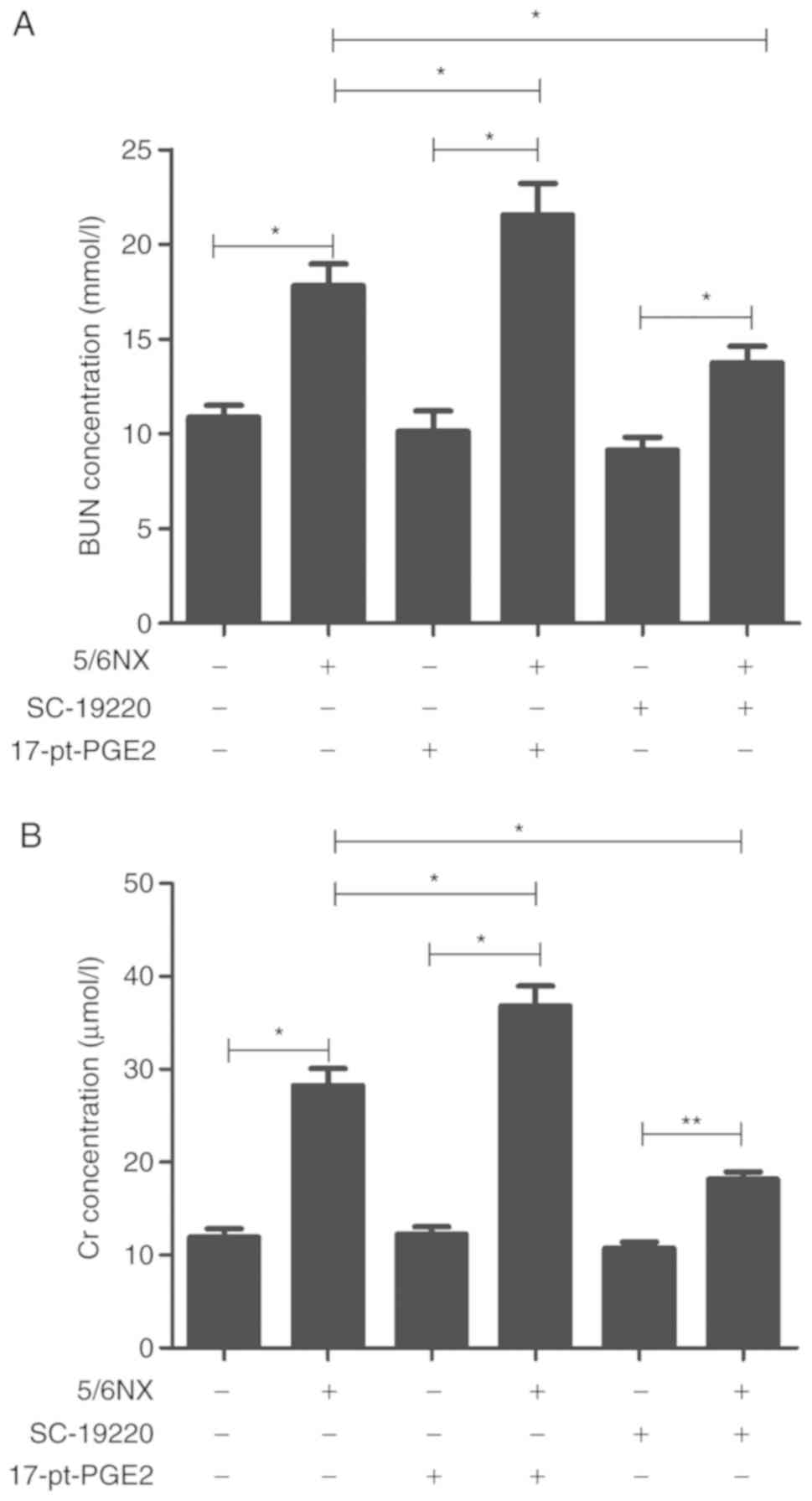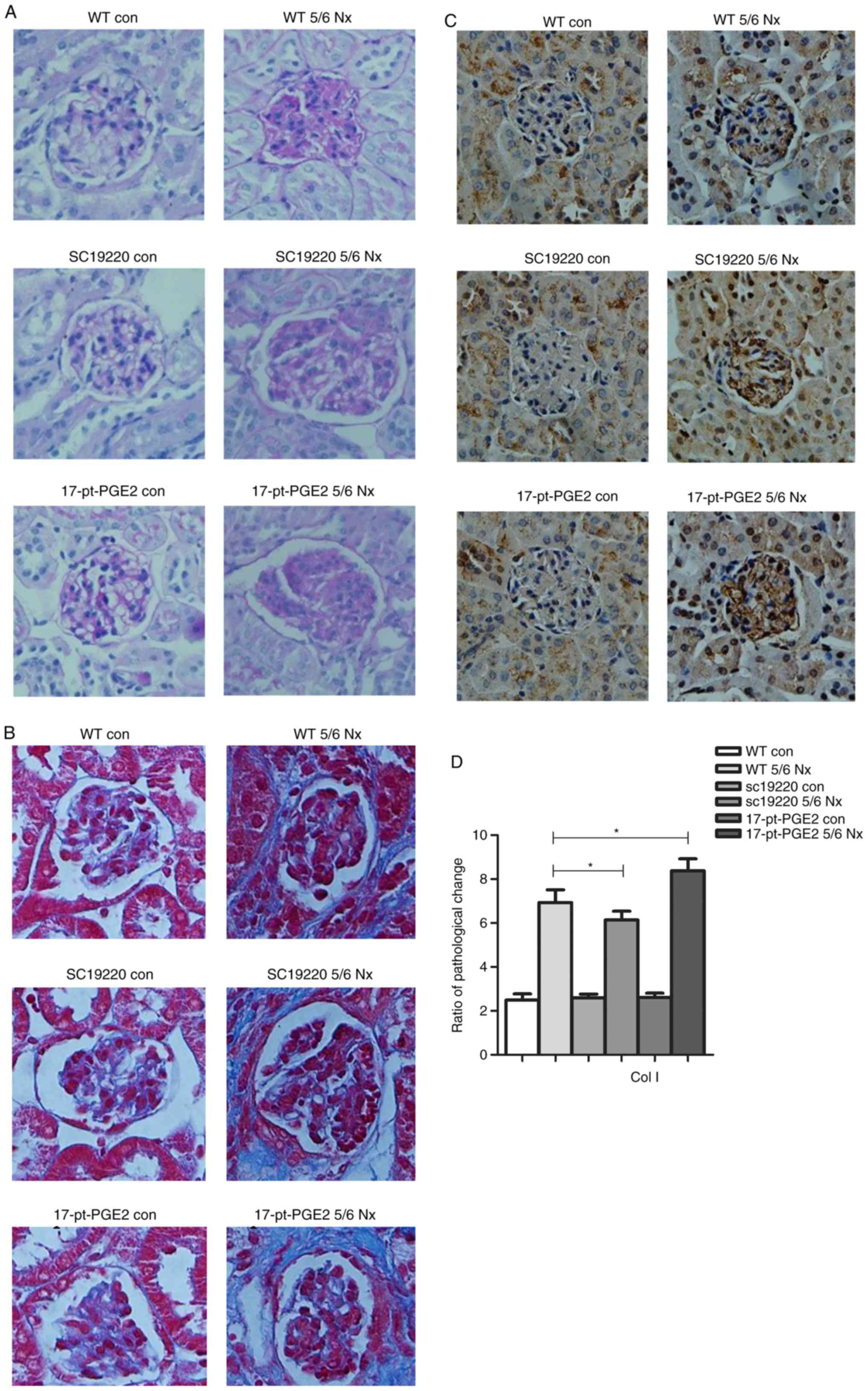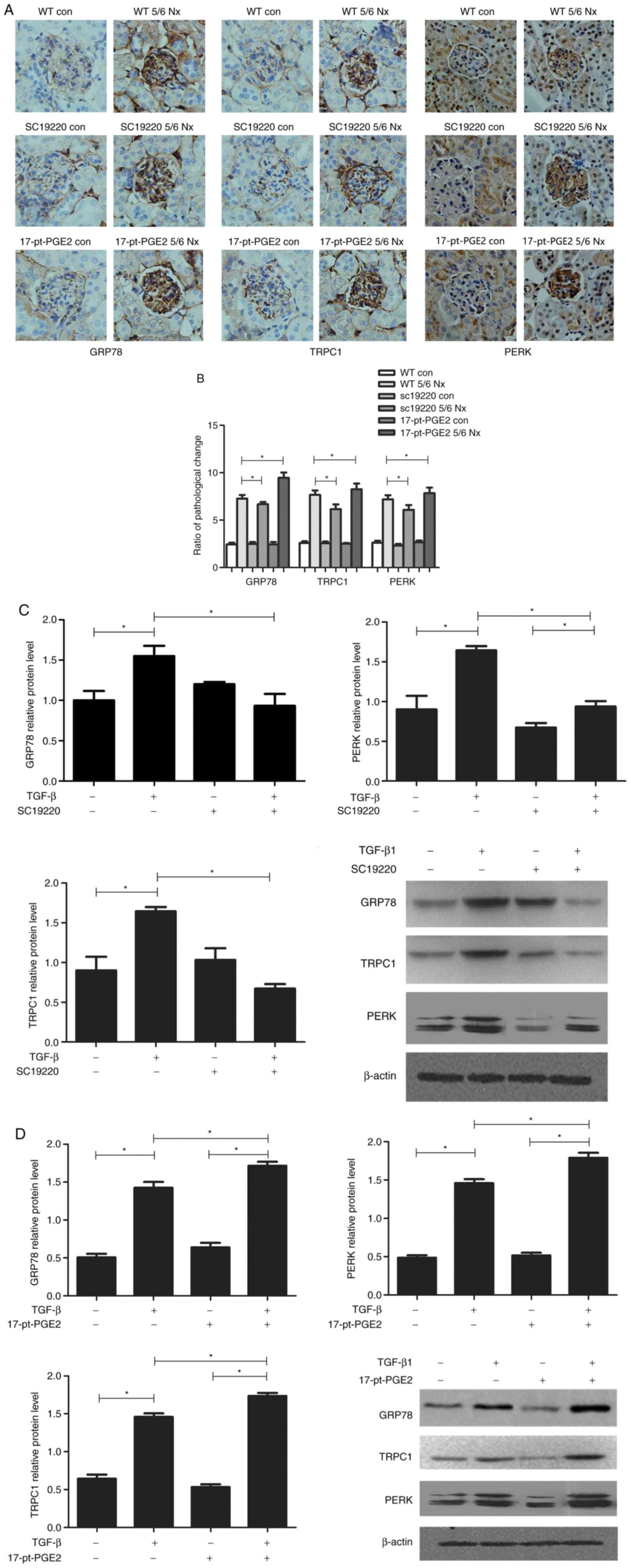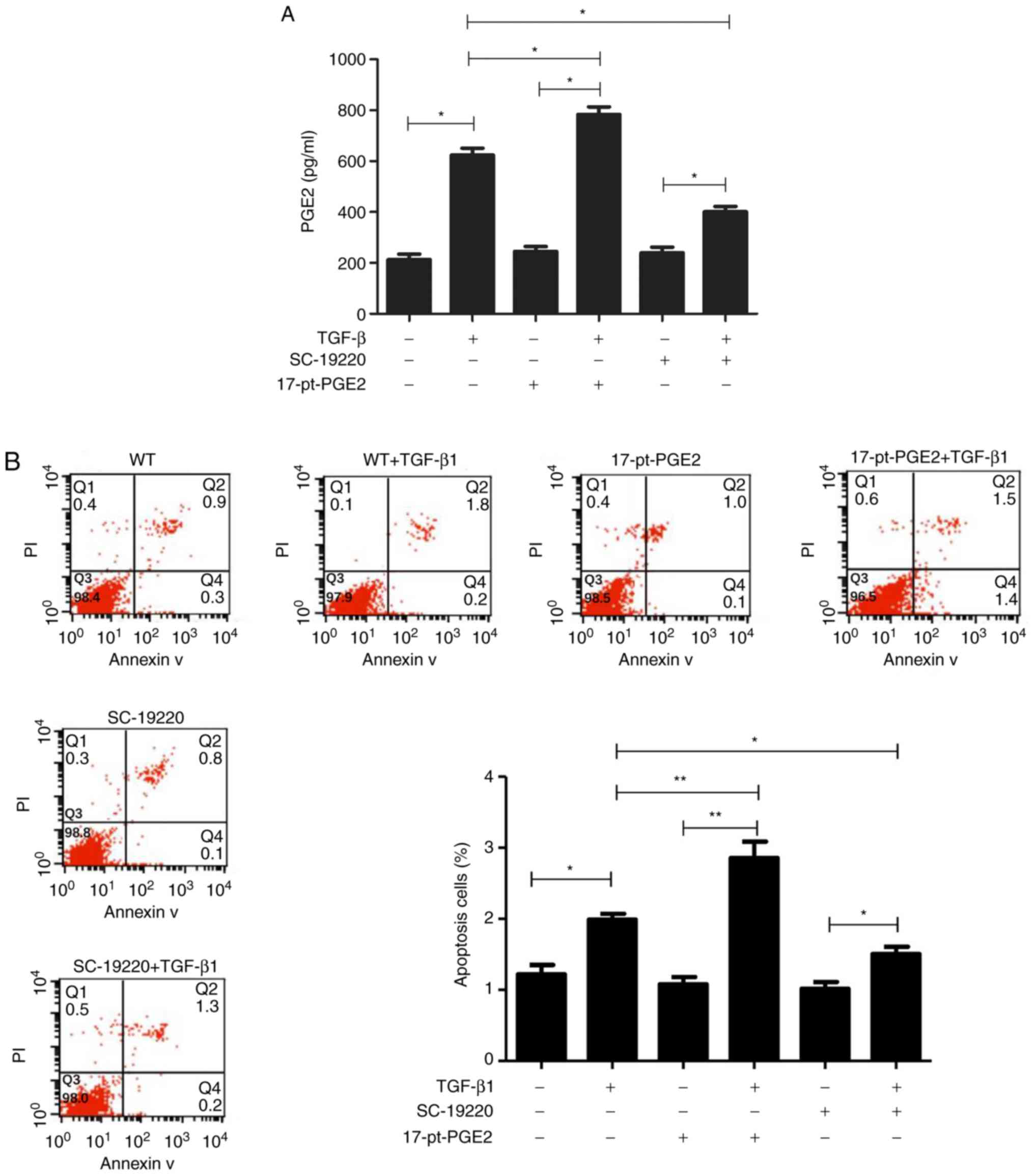|
1
|
Humphreys BD: Mechanisms of renal
fibrosis. Annu Rev Physiol. 10:2887–326. 2018.
|
|
2
|
Nogueira A, Pires MJ and Oliveira PA:
Pathophysiological mechanisms of renal fibrosis: A review of animal
models and therapeutic strategies. In Vivo. 31:1–22. 2017.
View Article : Google Scholar : PubMed/NCBI
|
|
3
|
Meng XM, Zhang Y, Huang XR, Ren GL, Li J
and Lan HY: Treatment of renal fibrosis by rebalancing TGF-β/Smad
signaling with the combination of asiatic acid and naringenin.
Oncotarget. 6:36984–36997. 2015. View Article : Google Scholar : PubMed/NCBI
|
|
4
|
Loboda A, Sobczak M, Jozkowicz A and Dulak
J: TGF-β1/Smads and miR-21 in renal fibrosis and inflammation.
Mediators Inflamm. 2016:83192832016. View Article : Google Scholar : PubMed/NCBI
|
|
5
|
Chen X, Jiang D, Wang J, Chen X, Xu X, Xi
P, Fan Y, Zhang X and Guan Y: Prostaglandin E2 EP1 receptor
enhances TGF-β1-induced mesangial cell injury. Int J Mol Med.
35:285–293. 2015. View Article : Google Scholar : PubMed/NCBI
|
|
6
|
Nasrallah R, Hassouneh R and Hébert RL:
Chronic kidney disease: Targeting prostaglandin E2 receptors. Am J
Physiol Renal Physiol. 307:F243–F250. 2014. View Article : Google Scholar : PubMed/NCBI
|
|
7
|
Akaba T, Komiya K, Suzaki I, Kozaki Y,
Tamaoki J and Rubin BK: Activating prostaglandin E2 receptor
subtype EP4 increases secreted mucin from airway goblet cells. Pulm
Pharmacol Ther. 48:117–123. 2018. View Article : Google Scholar : PubMed/NCBI
|
|
8
|
Jin Y, Smith C, Hu L, Coutant DE,
Whitehurst K, Phipps K, McNearney TA, Yang X, Ackermann B, Pottanat
T and Landschulz W: LY3127760, a selective prostaglandin E4 (EP4)
receptor antagonist and celecoxib: A comparison of pharmacological
profles. Clin Transl Sci. 11:46–53. 2018. View Article : Google Scholar : PubMed/NCBI
|
|
9
|
Fujioka H, Funabashi T and Akema T:
Prostaglandin E2 modulates presynaptic regulation of GnRH neurons
via EP4 receptors in accordance with estrogen milieu. Neuroscience.
30:139–145. 2017. View Article : Google Scholar
|
|
10
|
Thieme K, Majumder S, Brijmohan AS, Batchu
SN, Bowskill BB, Alghamdi TA, Advani SL, Kabir MG, Liu Y and Advani
A: EP4 inhibition attenuates the development of diabetic and
non-diabetic experimental kidney disease. Sci Rep. 7:34422017.
View Article : Google Scholar : PubMed/NCBI
|
|
11
|
Hong YA, Yang KJ, Jung SY, Park KC, Choi
H, Oh JM, Lee SJ, Chang YK, Park CW, Yang CW, et al: Paricalcitol
pretreatment attenuates renal ischemia-reperfusion injury via
prostaglandin E2 receptor EP4 pathway. Oxid Med Cell Longev.
2017:50319262017. View Article : Google Scholar : PubMed/NCBI
|
|
12
|
Jiang J, Qiu J, Li Q and Shi Z:
Prostaglandin E2 signaling: Alternative target for glioblastoma?
Trends Cancer. 3:75–78. 2017. View Article : Google Scholar : PubMed/NCBI
|
|
13
|
Bai X, Wang J, Guo Y, Pan J, Yang Q, Zhang
M, Li H, Zhang L, Ma J, Shi F, et al: Prostaglandin E2 stimulates
β1-integrin expression in hepatocellular carcinoma through the EP1
receptor/PKC/NF-κB pathway. Sci Rep. 4:65382014. View Article : Google Scholar : PubMed/NCBI
|
|
14
|
Cybulsky AV: Endoplasmic reticulum stress,
the unfolded protein response and autophagy in kidney diseases. Nat
Rev Nephrol. 13:681–696. 2017. View Article : Google Scholar : PubMed/NCBI
|
|
15
|
Inagi R: Endoplasmic reticulum stress as a
progression factor for kidney injury. Curr Opin Pharmacol.
10:156–165. 2010. View Article : Google Scholar : PubMed/NCBI
|
|
16
|
Sours-Brothers S, Ding M, Graham S and Ma
R: Interaction between TRPC1/TRPC4 assembly and STIM1 contributes
to store-operated Ca2+ entry in mesangial cells. Exp Biol Med
(Maywood). 234:673–682. 2009. View Article : Google Scholar : PubMed/NCBI
|
|
17
|
Vetterkind S, Poythress RH, Lin QQ and
Morgan KG: Hierarchical scaffolding of an ERK1/2 activation
pathway. Cell Commun Signal. 11:652013. View Article : Google Scholar : PubMed/NCBI
|
|
18
|
Guan Y, Zhang Y, Wu J, Qi Z, Yang G, Dou
D, Gao Y, Chen L, Zhang X, Davis LS, et al: Antihypertensive
effects of selective prostaglandin E2 receptor subtype 1 targeting.
J Clin Invest. 117:2496–2505. 2007. View
Article : Google Scholar : PubMed/NCBI
|
|
19
|
Makino H, Tanaka I, Mukoyama M, Sugawara
A, Mori K, Muro S, Suganami T, Yahata K, Ishibashi R, Ohuchida S,
et al: Prevention of diabetic nephropathy in rats by prostaglandin
E receptor EP1-selective antagonist. J Am Soc Nephrol.
13:1757–1765. 2002. View Article : Google Scholar : PubMed/NCBI
|
|
20
|
González AA, Céspedes C, Villanueva S,
Michea L and Vio CP: E Prostanoid-1 receptor regulates renal
medullary alphaENaC in rats infused with angiotensin II. Biochem
Biophys Res Commun. 389:372–327. 2009. View Article : Google Scholar : PubMed/NCBI
|
|
21
|
Xu Y, Wang J, Pan T, Chen X, Xu X, Jiang D
and Yin J: Role of the ER stress in prostaglandin E2/E-prostanoid 2
receptor involved TGF-β1-induced mice mesangial cell injury. Mol
Cell Biochem. 411:43–55. 2016. View Article : Google Scholar : PubMed/NCBI
|
|
22
|
Santangelo S, Shoup M, Gamelli RL and
Shankar R: Prostaglandin E2 receptor antagonist (SC-19220)
treatment restores the balance to bone marrow myelopoiesis after
burn sepsis. J Trauma. 48:826–830. 2000. View Article : Google Scholar : PubMed/NCBI
|
|
23
|
Yang GX, Xu YY, Fan YP, Wang J, Chen X,
Zhang Y and Wu J: A maladaptive role for EP4 receptors in mouse
mesangial cells. PLoS One. 9:e1040912014. View Article : Google Scholar : PubMed/NCBI
|
|
24
|
Das F, Ghosh-Choudhury N, Kasinath BS and
Choudhury GG: TGFβ enforces activation of eukaryotic elongation
factor-2 (eEF2) via inactivation of eEF2 kinase by p90 ribosomal S6
kinase (p90Rsk) to induce mesangial cell hypertrophy. FEBS Lett.
584:4268–4272. 2010. View Article : Google Scholar : PubMed/NCBI
|
|
25
|
Cao Y, Pan T, Chen X, Wu J, Guo N and Wang
B: EP4 knockdown alleviates glomerulosclerosis through Smad and
MAPK pathways in mesangial cells. Mol Med Rep. 18:5141–5150.
2018.PubMed/NCBI
|
|
26
|
Liu S, Ji Y, Yao J, Zhao X, Xu H, Guan Y,
Breyer RM, Sheng H and Zhu J: Knockout of the prostaglandin E2
receptor subtype 3 promotes eccentric cardiac hypertrophy and
fibrosis in mice. J Cardiovasc Pharmacol Ther. 22:71–82. 2017.
View Article : Google Scholar : PubMed/NCBI
|
|
27
|
Gao Y, Zhao C, Wang W, Jin R, Li Q, Ge Q,
Guan Y and Zhang Y: Prostaglandins E2 signal mediated by receptor
subtype EP2 promotes IgE production in vivo and contributes to
asthma development. Sci Rep. 6:205052016. View Article : Google Scholar : PubMed/NCBI
|
|
28
|
Xu H, Du S, Fang B, Li C, Jia X, Zheng S,
Wang S, Li Q, Su W, Wang N, et al: VSMC-specific EP4 deletion
exacerbates angiotensin II-induced aortic dissection by increasing
vascular inflammation and blood pressure. Proc Natl Acad Sci USA.
116:8457–8462. 2019. View Article : Google Scholar : PubMed/NCBI
|
|
29
|
Zhang D, Yang H, Kong X, Wang K, Mao X,
Yan X, Wang Y, Liu S, Zhang X, Li J, et al: Proteomics analysis
reveals diabetic kidney as a ketogenic organ in type 2 diabetes. Am
J Physiol Endocrinol Metab. 300:E287–E295. 2011. View Article : Google Scholar : PubMed/NCBI
|
|
30
|
Gombedza FC, Shin S, Kanaras YL and
Bandyopadhyay BC: Abrogation of store-operated Ca2+
entry protects against crystal-induced ER stress in human proximal
tubular cells. Cell Death Discov. 5:1242019. View Article : Google Scholar : PubMed/NCBI
|


















